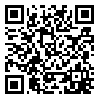BibTeX | RIS | EndNote | Medlars | ProCite | Reference Manager | RefWorks
Send citation to:
URL: http://jdisabilstud.org/article-1-1909-en.html
2- Associate Professor, Department of Psychology, Semnan Branch, Islamic Azad University, Semnan, Iran
3- Assistant Professor, Department of Psychology, Semnan Branch, Islamic Azad University, Semnan, Iran
4- Associate Professor, Department of sociology, University of Mazandaran, Babolsar, Iran
Background & Objectives: Today's societies face many challenges in various aspects. One of these challenges is related to social harm. Social injuries, especially in recent years, have become more widespread. Iranian society is young in age and for various reasons, today's generation of Iranians suffers from various traumas. One of these social disadvantages is high–risk behaviors. Risky behaviors are socially unacceptable and have negative consequences. Self–care against risky behaviors is influenced by several factors. One of the influential variables in this field is the conflict between adolescents and their parents. The way adolescents interact with parents can have a direct impact on how they deal with social harm. Challenging environments experience higher risk behaviors by individuals. Self–care against high–risk behaviors is one of the major challenges facing students. Therefore, it is important to consider the factors affecting it. This study aimed to investigate the effect of social skills on self–care against high–risk behaviors mediated by adolescent conflict with parents.
Methods: The research method in the first phase was instrument making and in the second phase, the correlational type of structural equation modeling. The first phase was related to high–risk behavior instrumentation and the second phase was related to modeling. The statistical population included high school students from Amol City, Iran, in the 11th and 12th grades, studying in the 2019–20 academic year. Of whom, 300 were selected for the first phase (by the available sampling method) and 385 for the second phase (by the cluster random sampling method). The inclusion criteria were studying in the 11th and 12th grades, lacking acute or chronic medical diseases such as epilepsy, skeletal diseases, heart, and respiratory failure, and not suffering from severe mental illnesses such as psychotic disorders. The exclusion criteria were the use of psychoactive drugs or substance abuse. Data were obtained using a researcher–made high–risk behavior questionnaire, Parent–Adolescent Conflict Scale (Robin & Foster, 1989), and Social Skills Rating System Scale (Gresham & Elliott, 1990). In the first phase, analysis of the main components was performed by calculating varimax rotation, approximate Chi–square test, Cronbach alpha, retest, the Pearson correlation coefficient, CVI, and CVR indexes. In the second phase of modeling, the Pearson correlation coefficient and structural equation model were performed in SPSS.22 and AMOS.22 software. The significance level in this study was considered 0.01.
Results: The findings of the first phase indicated the appropriate validity and reliability of the high–risk behavior scale (KMO=0.85, χ2 =4.023, Cronbach alpha=0.92, and retest=0.71). In the modeling phase, the path coefficient between social skills and parental conflict (p<0.001, β=–0.57) and high–risk behaviors (p<0.001, β=–0.37) were negative and significant. Adolescent conflict with parents mediated the relationship between self–care and high–risk behaviors (RMSEA=0.071, AGFI=0.93).
Conclusion: The findings of the first phase of the study indicated the validity and reliability of the risky behaviors questionnaire. Findings from the modeling phase showed that adolescents 'conflict with their parents reduces students' self–care and their greater tendency to engage in high–risk behavior.
| Rights and permissions | |
 |
This work is licensed under a Creative Commons Attribution-NonCommercial 4.0 International License. |





